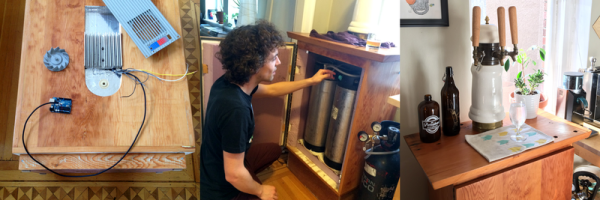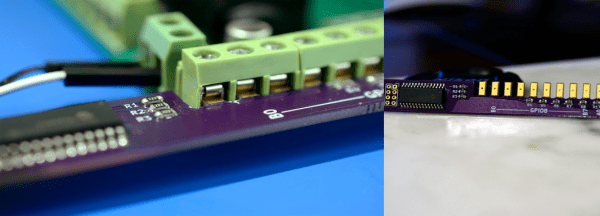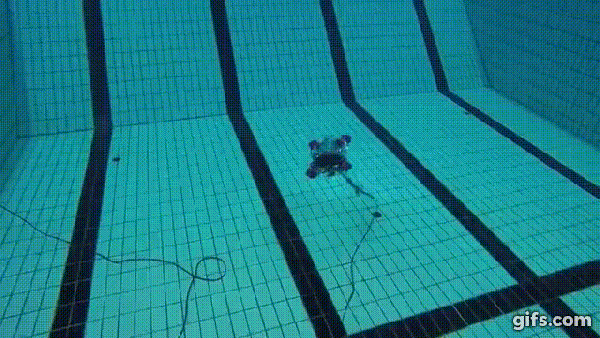[Luke] brews his own beer. And like all beer brewers, he discovered that the worst part of homebrewing is cleaning out all the bottles. Time for a kegging system! And that means, time for a kegerator to keep the brew cold.
Normal kegerators are just a few holes drilled in an appropriate refrigerator. Most fridges have a step in the back where the compressor lives, which makes kegs an awkward fit, so [Luke] decided to build his own refrigerator.
He used beautiful wood and plenty of insulation. He failed, though, because he succumbed to the lure of the Peltier cooler. If there’s one problem with Peltier projects, it’s building first and looking up the specs second. They never have enough cool-juice. To quote [Luke]:
“… a comment I had seen somewhere on the Internet began to sink in: all projects involving peltier devices ultimately end in disappointment.“
(Bolding and italics from the original.) But at least he learned about defrosting, and he had a nice wood-paneled fridge-box in the basement.
Rather than give up, he found a suitable donor fridge, ripped out its guts, and transplanted them into his homemade box. A beautiful tap head sitting on top completes the look. And of course, there’s an ESP8266 inside logging the temperature and controlling the compressor, with all the data pushed out over WiFi. Try doing that with your Faraday Cage metal fridge!
We’ve seen kegerator builds before. Some of our favorites include this one that has a motorized retracting tap tower, and one that’s built into the walls of the house.

















